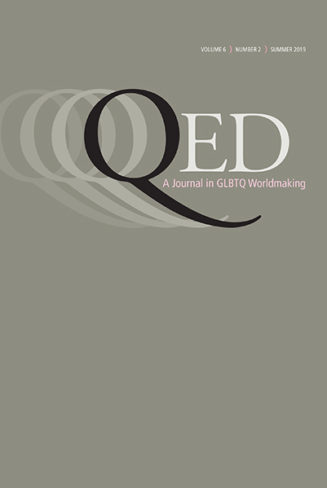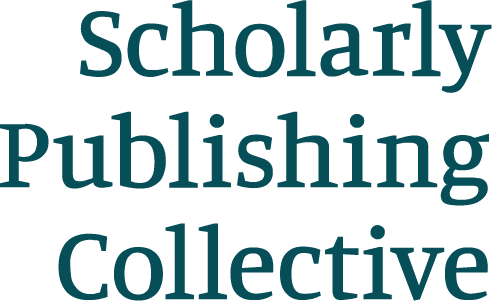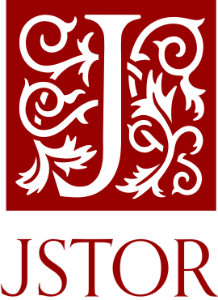QED
A Journal in GLBTQ Worldmaking

QED
Individuals
Institutional electronic subscriptions are available through the Scholarly Publishing Collective.See Journals Subscriptions Page for more information.
Journal Information
- ISSN: 2327-1574
- eISSN: 2327-1590
- Current Issue: Vol. 11, no. 2 (2024)
- Frequency: Three times per year
Description
QED: A Journal in GLBTQ Worldmaking (published 3 times/yr.) brings together scholars, activists, public intellectuals, artists, and policy and culture makers to discuss, debate, and mobilize issues and initiatives that matter to the diverse lived experience, struggle, and transformation of GLBTQ peoples and communities wherever they may be. With an emphasis on worldmaking praxis, QED welcomes theory, criticism, history, policy analysis, public argument, and creative exhibition, seeking to foster intellectual and activist work through essays, commentaries, interviews, roundtable discussions, and book and event reviews.
QED is not an acronym, though, of course, Q resonates queerly for us, as we imagine it will for many readers. We wish our intentional indeterminacy to be playful, productive, propulsive. This configuration will be recognized by some as signifying the Latin phrase, quod erat demonstrandum, meaning “that which had to be demonstrated,” which used to be placed at the end of mathematical proofs to inscribe a stamp of consummation. This connotation appeals to us insofar as we understand this journal’s mission as centrally concerned with praxis, which is to say that we believe the success of QED generally, and of any of the words on its pages, shall be determined by its demonstration, by the difference it seeks to manifest in the world. We hope that this high bar, this idealism, will be constitutive. Other readers, though lamentably too few given the infrastructural deficits vexing GLBTQ history and memory, will recognize Q.E.D. as the title of Gertrude Stein’s explicitly lesbian autobiographical novel, written in 1903 but not published until after her death in 1950. Stein’s use of the acronym ironically represented the relations among the women that unfolded in her narrative. Activism, archive, wit, desire—our hope is that all of these terms will, among others, characterize this GLBTQ project, and that you will venture to make other meanings and doings of it.
Our use of theterm “worldmaking” is much more deliberate in its derivation. Since our first encounter 15 years ago with its conceptualization by queer theorists Lauren Berlant and Michael Warner in their influential essay, “Sex in Public,” we have been inspired and challenged by the still generative and demanding implications of their idea of “queer worldmaking”—creative, performative, intimate, public, disruptive, utopian, and more. Of such a “world-making project,” they wrote: “The queer world is a space of entrances, exits, unsystematized lines of acquaintance, projected horizons, typifying examples, alternate routes, blockages, incommensurate geographies.” Among its key assumptions and commitments are belonging, transformation, memory, mobility, “the inventiveness of the queer world making and of the queer world’s fragility.” GLBTQ people, through complex theory, artful exhibition, street activism, and practices of everyday life, have richly embodied, interrogated, and extended this concept. Our appropriation of it is dedicatory and aspirational.



